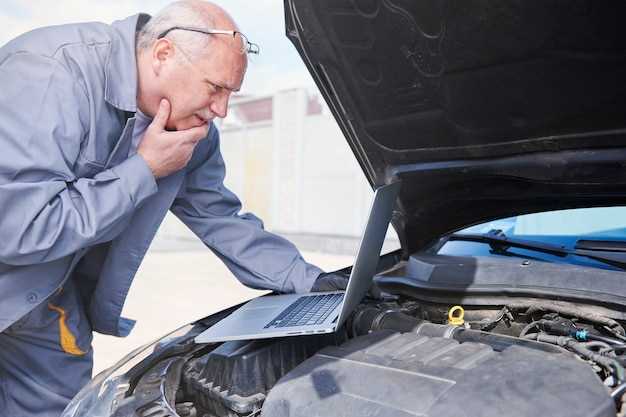Common Transmission Problems and How to Avoid Them

The transmission is a critical component of any vehicle, directly influencing its performance and longevity. Regular diagnostics can prevent minor issues from escalating into major problems. Early detection of transmission faults minimizes repair costs and ensures a safer driving experience. Understanding common transmission issues, such as slipping, is essential for any car owner who wishes to maintain their vehicle in optimal condition.
Slipping occurs when the transmission unexpectedly changes gears, making it seem as though the car is losing power. This issue can be both frustrating and dangerous, often indicating a need for immediate attention. By recognizing the symptoms of transmission slipping early on, drivers can take proactive measures to address the problem before it leads to more extensive damage.
In this article, we will explore a range of common transmission problems, along with effective prevention tips that every car owner can utilize. From routine maintenance practices to understanding warning signs, these strategies will empower you to keep your vehicle running smoothly and efficiently.
Identifying Symptoms of Gear Slipping in Your Vehicle

Gear slipping is a common issue in automotive transmission systems that can lead to significant performance problems if not addressed promptly. One of the primary symptoms is the engine RPM increasing without a corresponding increase in vehicle speed. This condition occurs when the transmission fails to engage the selected gear properly, resulting in a disconnection between the engine and the wheels.
Another important symptom to watch for is the unexpected loss of power during acceleration. If you experience a sudden decrease in acceleration or a sensation that the vehicle is “shuddering,” it may indicate that the gears are not engaging correctly, leading to inefficiency and potential damage.
Additionally, unusual noises such as grinding, whining, or clunking sounds while shifting gears can signal slipping issues. These noises result from friction between the gears or components failing to engage as intended. Pay attention to whether these sounds occur during specific driving situations, as they can aid in diagnostics.
Inconsistent or delayed shifting is another critical sign of gear slipping. If you notice that your vehicle hesitates before changing gears or shifts roughly, it is essential to investigate further. These symptoms may signal impending transmission failure or slipping that requires immediate attention.
Lastly, low transmission fluid levels or contamination can exacerbate slipping problems. Regularly checking and maintaining your transmission fluid is vital for ensuring optimal performance. If you find your vehicle struggling with any of the symptoms mentioned, professional diagnostics should be performed to identify the root cause and prevent further issues.
Common Causes of Transmission Failure and How to Address Them

Transmission failure can be attributed to several common issues that, if not addressed promptly, can lead to significant vehicle damage and costly repairs. One primary cause is slipping, which occurs when the transmission unexpectedly changes gears or fails to engage properly. This issue can stem from low transmission fluid levels, worn-out clutch components, or internal damage.
To address slipping, first, check the transmission fluid level and quality. Low or dirty fluid can affect performance. If the fluid is low, refill it with the appropriate type recommended by your vehicle’s manufacturer. If the fluid is dirty or burnt, it may be necessary to perform a transmission fluid change or flush.
Another common cause of transmission failure is overheating. When the transmission overheats, it can lead to severe damage, including seals hardening and internal parts wearing prematurely. Overheating can result from low fluid levels, a failing transmission cooler, or a malfunctioning thermostat.
Prevent overheating by ensuring that the cooling system is functioning correctly. Regularly inspect the transmission cooler and lines for leaks. Additionally, maintain proper fluid levels and replace old fluid as needed. If overheating occurs, conducting diagnostics to pinpoint the source is essential to prevent extensive damage.
A third issue is worn or damaged gears, which can lead to grinding noises and difficulty shifting. This problem often arises from neglecting routine maintenance, such as not changing the transmission fluid at recommended intervals. To mitigate wear on gears, ensure that routine servicing is performed according to the manufacturer’s schedule.
Finally, contamination by debris or water can also cause transmission failure. Contaminants can disrupt the smooth operation of the transmission, leading to failures. To minimize the risk, regularly change the transmission filter and fluid, as this helps eliminate particles that can accumulate over time.
In summary, addressing common causes of transmission failure requires vigilant maintenance and timely diagnostics. By being proactive, vehicle owners can extend the life of their transmission and avoid costly repairs.
Regular Maintenance Tips to Prevent Transmission Problems
To ensure your car’s transmission functions smoothly and to minimize the risk of slipping or gear-related issues, regular maintenance is essential. Here are several key tips to help you prevent potential transmission problems.
First, check and change the transmission fluid regularly. Transmission fluid plays a vital role in lubricating and cooling the transmission components. Low or dirty fluid can lead to slipping or difficulties in shifting gears. Refer to your owner’s manual for the recommended fluid change intervals and adhere to those guidelines.
Secondly, pay attention to any unusual noises or sensations while driving. If you notice grinding sounds or hesitation when shifting gears, these could be warning signs of a transmission issue. Early detection can prevent more severe damage and costly repairs.
Additionally, ensure that your car is not overloaded. Excess weight can put unnecessary strain on the transmission, leading to premature wear and potential slipping. Familiarize yourself with your vehicle’s weight limits and avoid exceeding them.
Regularly inspect and replace transmission filters if your vehicle has them. Clogged filters can restrict fluid flow, resulting in poor shifting performance and increased risk of transmission failure. A clean filter helps maintain optimal fluid circulation.
Finally, consider having a professional perform comprehensive transmission inspections periodically. A qualified technician can identify early signs of wear or malfunction, allowing for timely interventions before major problems arise.

